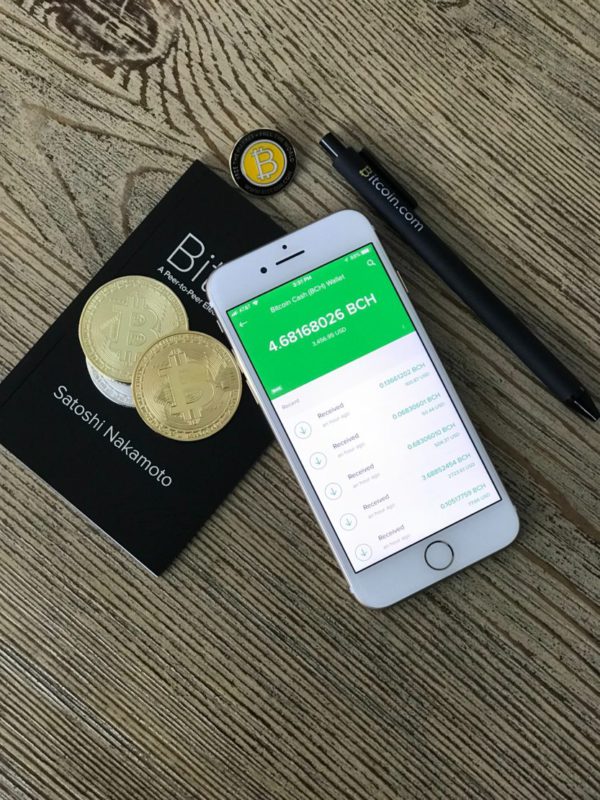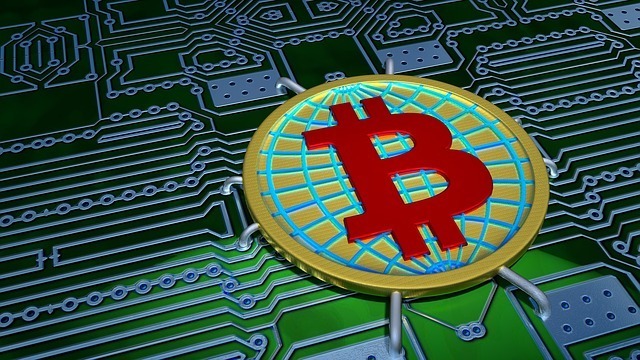What Is Lightning Network In Bitcoin And How Does It Work?
Bitcoin changed the way people thought about the Financial Services Infrastructure, which is made up of centralised institutions like banks. It gave people a decentralised way to pay for things where they could do transactions with each other directly and remain anonymous. The Lightning Network in Bitcoin has shown promise as a way to solve one of the Bitcoin Blockchain’s most difficult problems.
Does Bitcoin ever get in trouble? One of the main reasons Bitcoin failed was because it was so popular. As the network slowed down and cost more, it became harder to use. Lightning Network is a solution on top of the Bitcoin Blockchain. That makes use of micropayment channels to grow the Blockchain’s capacity. In the next post, you’ll find a thorough introduction to Bitcoin Lightning Network that will help you learn important facts.
What is the Lightning Network for Bitcoin?
Before you can understand how to use the Bitcoin Lightning Network app best, you need to know what a Lightning Network is. An extra layer on top of the Bitcoin Blockchain makes Off-chain Transactions possible. The second layer is made up of different ways for Bitcoin users to send and receive money. You can think of the Lightning Network channel as a way for people to send and receive payments between themselves.
The biggest benefit of the Lightning Network is that it makes Bitcoin Blockchain transactions easier to scale up. Lightning Network ensures that Transactions outside the main Blockchain network are managed. At the same time, the Bitcoin Lightning Network takes advantage of the security benefits of the Bitcoin Blockchain’s strong cryptographic security.
Why should users care about the Bitcoin Lightning Network?
Most people who want a lightning network token need to learn what the Bitcoin Lightning Network is and what it does. Scalability is one of the biggest problems that stop a lot of people from using cryptocurrencies. With better scalability, Blockchain networks could be able to handle billions of transactions per second. Lightning Network makes sure that Bitcoin transactions have low fees by letting off-chain validation happen. So, scalability solutions like the Lightning Network make it possible to think about new ways to use Bitcoin. For example, the fact that Bitcoin transactions can be made instantly could help solve the long-standing problem of “buying your coffee with Bitcoin.”
Scalability solutions like the Lightning Network could help Bitcoin use less energy and be processed faster. In fact, the number of Lightning Network transactions per second is not the only way to measure how well the scaling solution is working. You should also keep in mind that the Bitcoin Lightning Network has some problems as well. With low routing fees, the Lightning Network opens the door to malicious attacks. Because the fees for smaller Transactions are lower, miners avoid them. This means that traders have to pay routing fees and wait for Transaction validation. On the other hand, bad actors could quickly open and close payment channels, which can lead to network congestion and security holes.
Building blocks of the Lightning Network
The history of the Lightning Network could not be left out of an introduction to the Lightning Crypto Scalability Network for the Bitcoin Blockchain. In 2015, a research paper talked about the first idea for Lightning Network. It was about how to use payment channels in Bitcoin. Lightning Network began as a protocol that was not on the blockchain and had different payment channels. This could make it possible for two people to exchange value without having to trust each other. The fact that payment channels exist off-chain makes sure that transactions between two parties do not slow down the mainnet.
Off-chain channels have been made to solve the problem of the Bitcoin Blockchain not being able to grow. Joseph Poon and Thaddeus Dryja, who pushed for the Lightning Network, showed that Bitcoin could compete with traditional payment systems if it could handle about 8 GB of Transactions per block. But the current Bitcoin Blockchain is a long way behind what is needed to reach this level of performance. Bitcoin can only handle seven transactions per second right now. Also, guides that explain the lightning network in detail would stress the 1 MB limit on transactions per Bitcoin block. Lightning Network’s off-chain payment channels could let smaller transactions happen without clogging up the network and slowing it down.
With Lightning Labs, Dryja and Poon built the first parts of the Lightning Network in 2016. The team’s main goal, which had many people working on it at different times, was to make it work with the core Bitcoin network. The SegWit-based soft fork of the Bitcoin Blockchain in 2017 was interesting because it was good news for the Lightning Network project. Now, the Bitcoin Blockchain makes room for more Transactions to be put in a block.
Most importantly, the SegWit-based fork made sure that the bug in the Bitcoin Blockchain that made it possible to change transactions was fixed. During the testing of the Bitcoin Lightning Network, before it went live, developers could build apps on the platform. Most of the apps built on Lightning Network were made for simple tasks, like gambling sites and cryptocurrency wallets. The apps could use the Microtransactions feature of the Lightning Network. In 2018, Lightning Labs finally put the beta version of Lightning Network on the mainnet of the Bitcoin Blockchain. After that, well-known people like Jack Dorsey got on board with the project.
Taking care of the Lightning Network
In a guide on “how to use the Bitcoin lightning network,” the details of how it works would be on the list of important things. For a Transaction, the Lightning Network protocol creates peer-to-peer payment channels between two users or parties. After the channel is set up, it helps the parties exchange any number of Transactions faster and for less money. The Lightning Network is a small, one-of-a-kind ledger that people can use to pay for small goods and services.
The person who starts the Transaction should lock up a certain amount of Bitcoin in the Lightning Network. After that, the person receiving the money could make invoices based on the amounts deposited by the person paying. Users could also keep an open channel going by always adding Bitcoin. Transactions don’t happen on the main Bitcoin Blockchain when two people open and close payment channels. On the other hand, the Bitcoin Blockchain only keeps the most recent information about Off-chain Transactions on the Lightning Network.
If you want to buy Bitcoin Lightning Network tokens, you should also know that it lets you send money in payment channels for as long as you want. The Lightning Network speeds up Transactions because they don’t have to be checked by all nodes on the Bitcoin mainnet. The nodes on Lightning Network also have the ability to route transactions. The nodes of the Lightning Network are made up of both individual payment channels and the parties involved. So, you can say that Lightning Network is what happens when you put together different payment systems.
What Happens When a User Closes the Channel?
When two people agree that a transaction between them is over, the Bitcoin Lightning Network app helps close payment channels. When a payment channel is closed, its information is put into a single transaction, which is then sent to the Bitcoin main net for updates. When several small Transactions are combined into one, it takes the main Bitcoin Blockchain less time and works to verify the Transactions. If there weren’t any payment channels, small transactions could get in the way of bigger ones and slow down the network.
Payment channels can improve the number of Lightning Network transactions that can be done per second and make the network easier to scale. How can you be sure that the payment channels are reliable ways to send and receive Bitcoins? Lightning Network’s payment channels use smart contracts to set the rules that everyone agrees to follow. At the same time, smart contract code makes it possible for contracts to be automatically fulfilled because the conditions for Transactions in the payment channels are already set. When payment channels are closed, another important part of how Lightning Network works is that transactions in payment channels are anonymous after they have been validated. The Lightning Network would only show the total amount of money that was transferred, not the details of each transaction.
Lightning Network works to help users do Transactions without the limits of the Bitcoin Blockchain. Off-chain Transactions outside of the Bitcoin Blockchain with the Lightning crypto scalability network also make sure that the transactions are real by recording them on the Bitcoin Blockchain after the payment channels are closed. Off-chain Protocols have their own ledgers that connect to the main Bitcoin Blockchain. This is how Lightning Network was designed.
The Payment Lightning Channel
The main reason people are interested in the Bitcoin lightning network price for Crypto Transactions is because of how the payment channels work. When you look at how Lightning Network works in general, you can see that payment channels are an important part of the layer 2 solutions. Lightning channels are payment channels that can be used to send and receive Bitcoin payments in both directions.
Lightning channels are the basis of the Lightning Network, and they are usually linked to a clear amount of Bitcoin capacity. One of the most important things about Lightning payment channels is that each party gets a certain amount of Bitcoin capacity. Let’s take a look at how payment channels on the Lightning Network work in the real world.
How to Start a Lightning Payment Channel?
A Lightning Network payment channel could be set up between two people who want to do a Bitcoin transaction. Both parties need to put up Bitcoin for the Lightning Network exchange in payment channels. Users have to put the Bitcoin in a 2-of-2 multi-sig address. Once the deposit is confirmed, the Lightning Network opens the payment channel. In a payment channel, the two parties could do transactions for as long as they wanted, and the transactions would settle almost instantly and at a low cost. Once the transactions are done, the two parties must close the channel by doing another transaction on the Bitcoin chain. The overall change in the balances of both parties would be shown on the main Blockchain thanks to the on-chain Bitcoin transaction.
Also, read – The glow of American Independence by Bitcoin security
How can people use a Lightning Payment Channel to do business?
In a Lightning Network guide that goes into detail about how payment channels work, the ways to make transactions would also stand out. Payment channels work like a pool of assets that are split between the two parties involved. The assets are kept in the multi-sig address. This way, you don’t have to make another Lightning Network token or Bitcoin representation. In Lightning Network, all transactions go through the channel, which uses the redistribution of funds in the multi-sig address to make it work.
When Bitcoin is sent from one person to the other. The payment channel would change the balance without putting the changes on the Bitcoin Blockchain. Lastly, the people who use Lightning channels can close the channel when their transactions are done. The Bitcoin Blockchain records the transactions’ results on different payment channels. This makes it easier for nodes to validate.
How the Lightning Network routes
The routing of payments would also be a key part of understanding how to use a BTC Lighting Network wallet. The Lightning Network is made up of payment channels and nodes, which are the two main parts. A node doesn’t have to be connected to another node in order for payments to be sent. Routing is a good way to let two parties who aren’t connected to each other do business by using a collection of existing channels.
A good cryptographic process ensures that users can send crypto assets to other users using an existing channel. Then you can expect them to send them to the user you want. The person in the middle would get a small fee for making the transaction go through them. Hashed Time-Locked Contracts, or HLTCs, would be used in the cryptographic process for routing on the Lightning Network exchange. HLTC offers a certain type of Bitcoin transaction called a “smart contract,” which is handled by HLTC. This makes sure that the middlemen give the required amount to the person who needs it before asking the person who gave it for payment.
What are the pros and cons of the Bitcoin Lightning Network?
The basic outline of the Bitcoin Lightning Network shows how it can help solve the Bitcoin Blockchain’s scalability problems. You can see that the price of the Bitcoin Lightning Network is one of the best things about it. Bitcoin was not made to be able to handle a lot of transactions at once. Lightning Network helps transactions go faster without slowing down the network as a whole. If there isn’t a lot of traffic on the network, the Bitcoin Blockchain transaction fees go down by a lot. At the same time, the Lightning Network helps cut down on the amount of energy needed to keep up with the increasing difficulty of mining. Using multi-signature scripts and smart contracts, Lightning Network also makes sure that Off-chain Transactions are honest.
Users’ desire to buy Bitcoin Lightning Network tokens is a logical thing to happen. Lightning Network is a Blockchain network with many nodes for transactions that don’t go through the Blockchain. But the solution for the Bitcoin Blockchain’s layer 2 scalability has some problems, like the possibility of closed channel fraud. On top of that, the cost of the Lightning Network is based on routing fees, Bitcoin transaction fees, and fees for opening and closing channels. Concerns about the Lightning Network also come from the fact that wallets, Application Programming Interfaces, and payment channels could be hacked.
Last Words
The detailed explanation of the Lightning Network in Bitcoin shows how it could change how people use Bitcoin. Many users worry about how volatile Bitcoin is, while others worry about how long Bitcoin transactions take and how much they cost. As its name suggests, Lightning Network could help speed up transactions per second by using smart contracts and payment channels. Lightning Network is more likely to be used because of how well it works for peer-to-peer off-chain transactions. Also, the performance of the Bitcoin Blockchain is likely to improve if different small transactions are validated as one big transaction on the Bitcoin Blockchain.
Stay informed with daily updates from Blockchain Magazine on Google News. Click here to follow us and mark as favorite: [Blockchain Magazine on Google News].
Get Blockchain Insights In Inbox
Stay ahead of the curve with expert analysis and market updates.
latest from tech
Disclaimer: Any post shared by a third-party agency are sponsored and Blockchain Magazine has no views on any such posts. The views and opinions expressed in this post are those of the clients and do not necessarily reflect the official policy or position of Blockchain Magazine. The information provided in this post is for informational purposes only and should not be considered as financial, investment, or professional advice. Blockchain Magazine does not endorse or promote any specific products, services, or companies mentioned in this posts. Readers are encouraged to conduct their own research and consult with a qualified professional before making any financial decisions. The featured image used is just a creative depiction of the title and it does not intend to hurt sentiments of any person or institution. If it hurts anyone sentiments, please do not hesitate to reach out to Blockchain Magazine.

 Bitcoin
Bitcoin  Ethereum
Ethereum  XRP
XRP  Tether
Tether  Solana
Solana  Dogecoin
Dogecoin  USDC
USDC  Cardano
Cardano  Lido Staked Ether
Lido Staked Ether  TRON
TRON  Chainlink
Chainlink  Avalanche
Avalanche  Wrapped Bitcoin
Wrapped Bitcoin  Wrapped stETH
Wrapped stETH  Sui
Sui  Stellar
Stellar  Toncoin
Toncoin  Hedera
Hedera  Shiba Inu
Shiba Inu  Polkadot
Polkadot  WETH
WETH  LEO Token
LEO Token  Bitcoin Cash
Bitcoin Cash  Litecoin
Litecoin  Bitget Token
Bitget Token  Hyperliquid
Hyperliquid  Uniswap
Uniswap  Official Trump
Official Trump  Wrapped eETH
Wrapped eETH  USDS
USDS  Pepe
Pepe  NEAR Protocol
NEAR Protocol  Ethena USDe
Ethena USDe  Aave
Aave  Aptos
Aptos  Internet Computer
Internet Computer  Ondo
Ondo  Ethereum Classic
Ethereum Classic  WhiteBIT Coin
WhiteBIT Coin  Mantle
Mantle  Monero
Monero  Cronos
Cronos  POL (ex-MATIC)
POL (ex-MATIC)  Render
Render  Dai
Dai  Algorand
Algorand  MANTRA
MANTRA  Layer One X
Layer One X 




